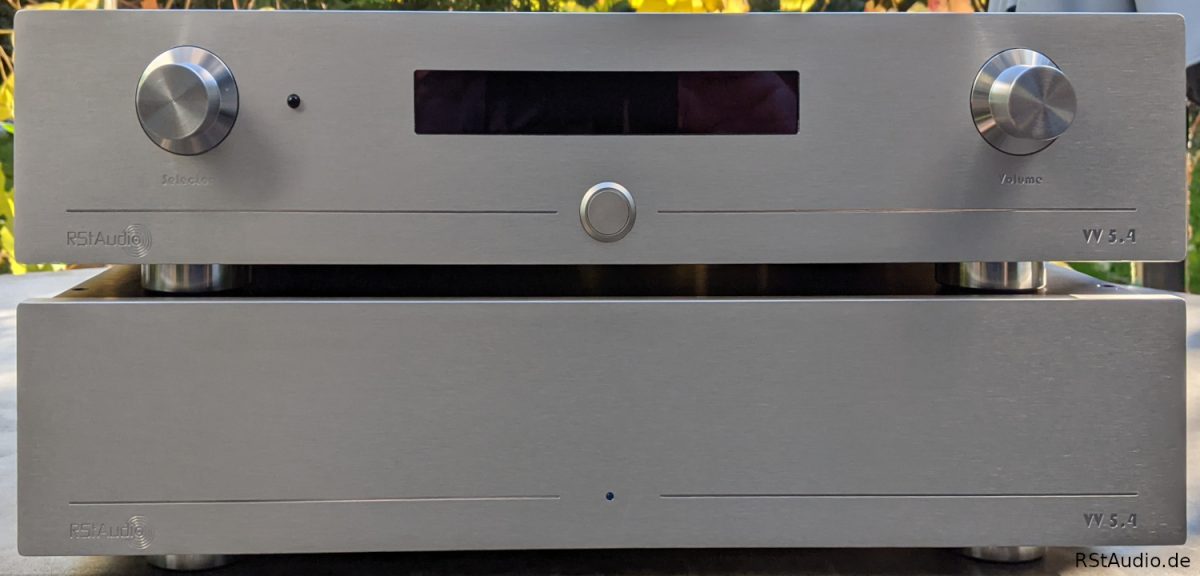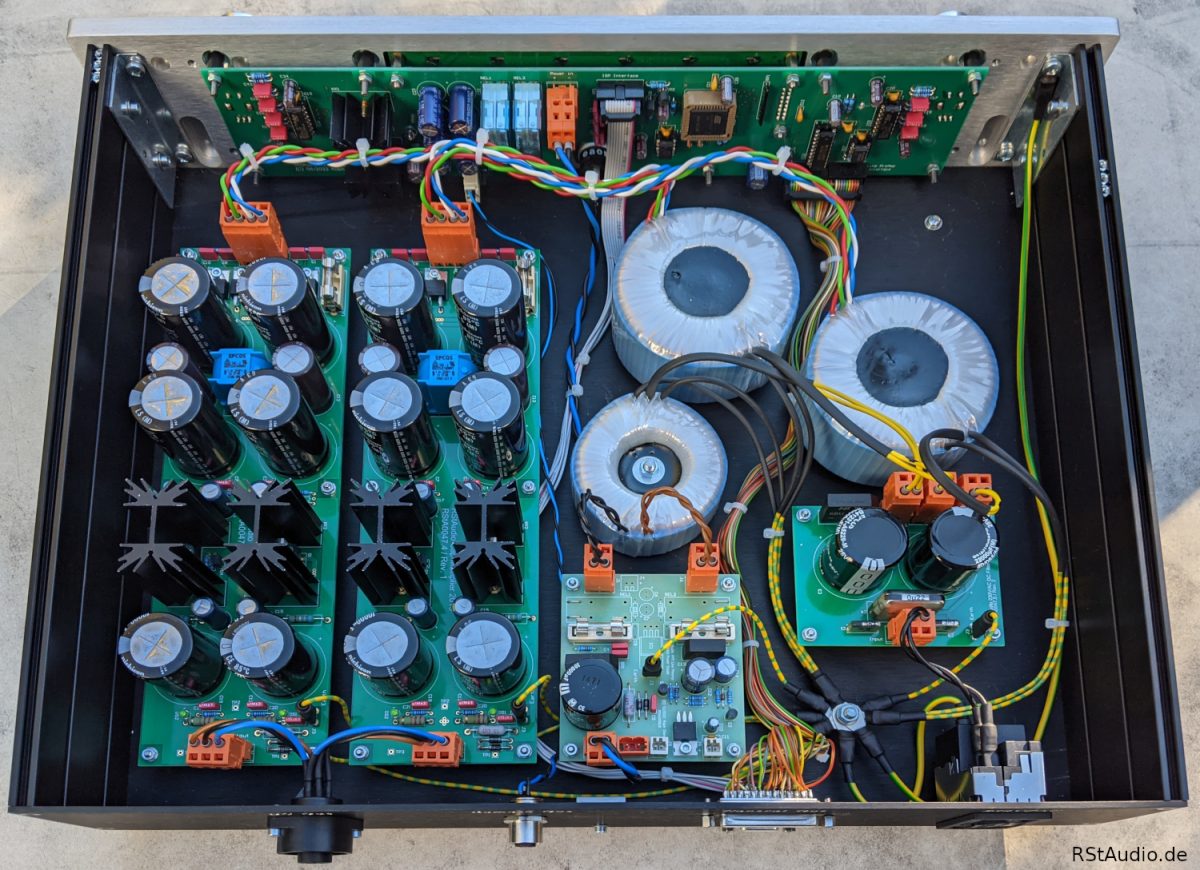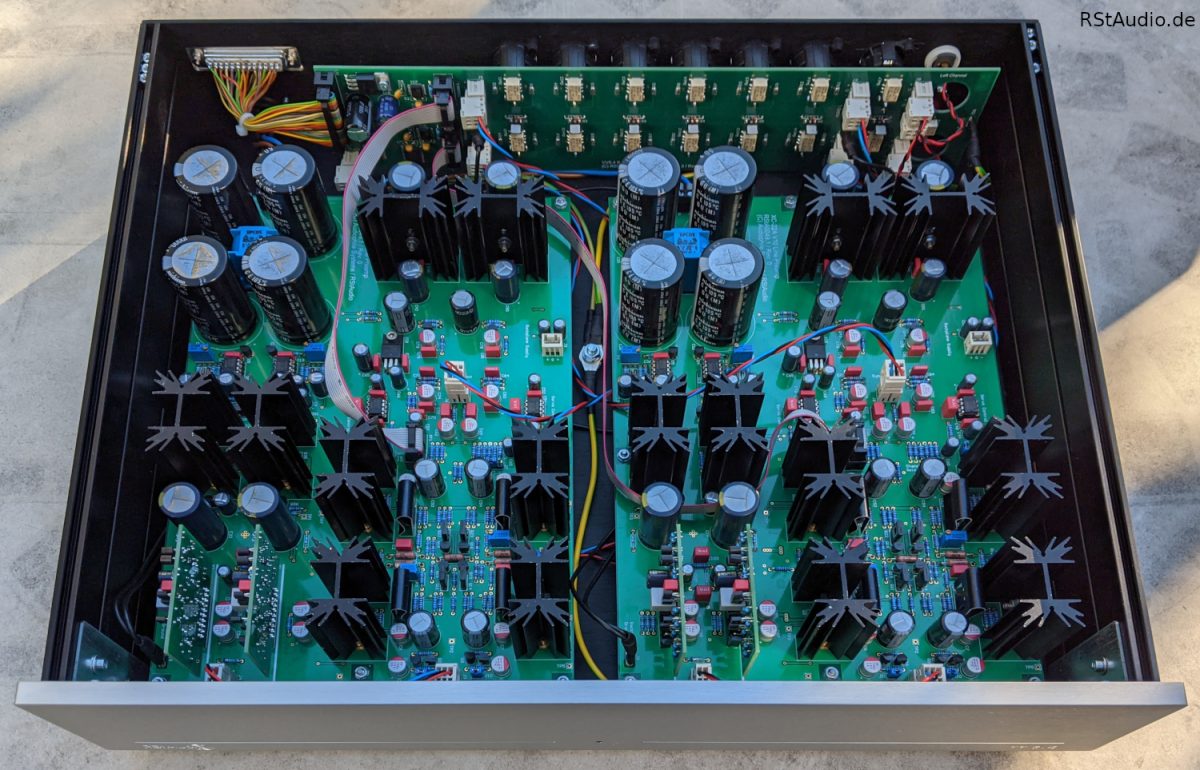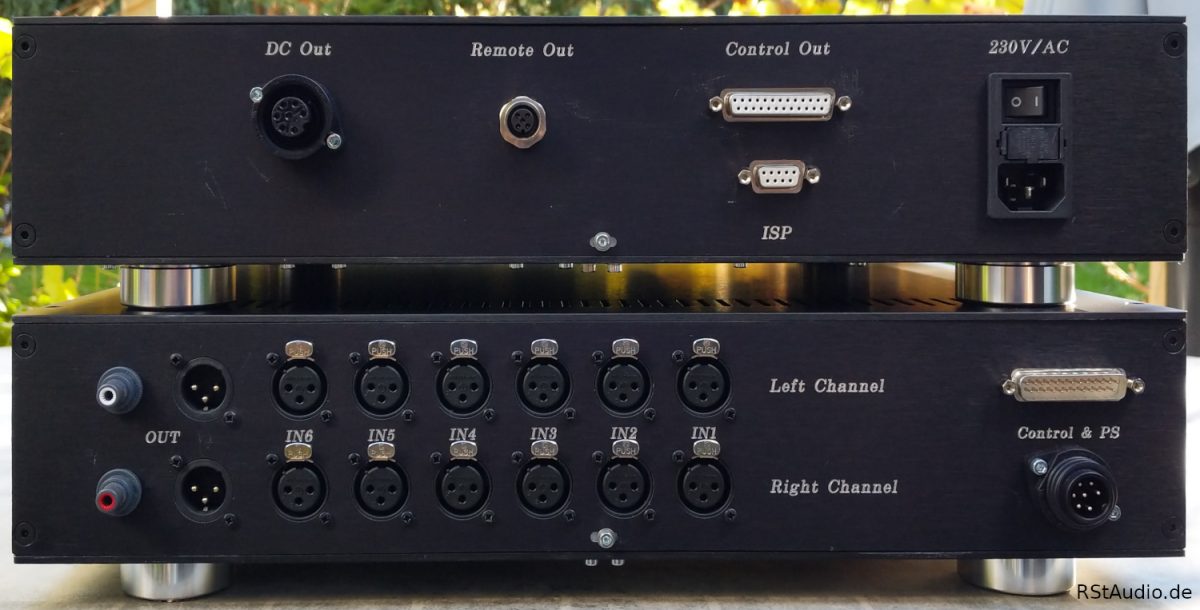
Table of Contents
Introduction
03-12-2022
The XC-22A line preamp in the VV5.2 & VV7 was quite convincing, for me the best preamp I have ever heard in my system.
My friend Guido asked me for a stereo preamplifier based on the XC-22A line level boards and I decided to build such a preamplifier for him in the summer of 2022. In doing so, I relied on existing components. The unregulated power supply comes from the XOno 2019 project and can also be found in my current VV7 preamplifier. The controller board is a modification from the VV7 project. What was not available was a PCB for the signal switching, the only board I had to develop from scratch for the VV5.4.
When choosing the name, I deliberately decided to continue the numbering of the VV5.2 preamplifier, as there are no new audio electronics with this project.
Preamplifier Concept
03-12-2022
I realised the preamplifier in two chassis. The first one contains the unregulated power supply and the controller, the second one contains the two audio boards and the signal switching. Due to the size of the audio boards and the fact that I still needed some space for the signal switching in the enclosure, the controller board had to move to the second chassis. The connection from the controller to the audio electronics is made via a standard 25-pin sub-D cable. The power supply is done as usual with the help of Hirschmann industrial plugs and a self-made cable.
I did not change anything on the XC-22A PCB and used it in this project as shown in the VV5.2 project. Exactly the same circuit can be found 4x in my VV7 preamplifier – 2 per line stage board. As I said, I am quite convinced of the audiophile performance of this stage.
Signal Switching
03-12-2022
Since I placed the two audio boards in one enclosure, the signal switching had to be designed for two channels. In order to provide enough inputs, I decided not to put any unbalanced inputs (Cinch) on the board. There are 6 balanced inputs to which an unbalanced source must be connected via an external adapter if required.
The control signals from the controller are completely separated from the audio signals in terms of potential. This applies primarily to the relays, which already fulfil this function, but also to the control signals to the two MUSES72320 volume chips. These are routed to the audio electronics – per channel – potential separated by an ADuM3154.
In order to get all signals including a reasonable shielding on the board, I decided to use a 4-layer PCB. I also used SMD relays to switch the signals. This way, the signals are not unnecessarily routed through all layers of the board and the shielding of the ground layers is particularly effective.
Installation in a Housing
03-12-2022
As always in the last years, the Slim Line cabinets with 10mm aluminium front from HiFi2000 are used. As already mentioned, 2 cabinets are necessary to accommodate the complete electronics of the preamplifier.
The photo above shows the inside view of the housing of the power supply unit and controller. On the left side you can see the two circuit boards for the analogue unregulated voltages of the audio circuit. To the right is the power supply for the digital electronics from the VV7. I didn’t need the remote control function of the controller like in the VV7, so the board is only partially assembled. On the right side you can see the 230V/AC DC filter.
I use 3 transformers for the operating voltages. This results in a dual-mono design of the audio electronics. In addition, the digital electronics are completely decoupled.
The controller board is placed behind the front. As usual with me, the display, the two rotary encoders and the IR receiver are connected directly to this circuit board, there is no cable connection.
When you look at the audio enclosure, you can see very clearly what I wrote about above. The enclosure is pretty well filled with the 3 boards. It was even a little challenging to lay the necessary cabling halfway neatly. The layout is clear, the two audio boards are screwed to the base plate. The signal switch is mounted directly on the rear panel.
Finally, you can see the rear sides of the two enclosures above.
On the right side of the rear panel of the controller the Schurter mains socket with switch, fuses and filter is placed. To the left of this, marked Control Out, the connection from the controller to the digital electronics in the audio cabinet is located. Not only the digital signals are carried, but also the corresponding operating voltage goes through this connection. The microcontroller can be programmed via the 9-pole Sub-D socket labelled ISP. Remote Out is a signal that can be used to switch on the other components of a system, if they are designed for this purpose. Finally, there is the socket labelled DC Out, which supplies the audio electronics with operating voltage.
On the rear panel of the audio cabinet, labelled Control & PS, you see on the right the connection to the digital electronics and on the other the socket for the analogue operating voltages. To the left are the 6 XLR inputs per channel. I always choose the numbering so that you don’t have to change your mind when looking at the unit from the front. On the left side you see the outputs. On the one hand, there are the XLR outputs that are directly connected to the outputs of the XC-22A preamplifiers. The two Cinch sockets each provide unbalanced output signals generated via 2 discrete operational amplifiers.
At the top of the page you can still see the view of the front of the preamplifier. The construction is the same as with all my devices in the last few years. The special thing here are the two front panels which, once again for my friend Guido, were made by the supplier of Clearaudio. The fonts are not blackened on request. In the middle of the controller housing is the display. To the left and right of it are the two rotary encoders. To the right of the left encoder is the IR receiver. The button below the display switches the preamplifier on and off. Again, only the digital electronics are switched, the audio electronics remain powered. There is only one LED on the audio housing to indicate the operating voltage.
Audiophile Review
03-12-2022
Ralph Stens:
I can’t really write anything here that I haven’t already reported on elsewhere. For me, this preamplifier is the best that has ever been used in my system – self-built and commercial – and there have been quite a few of them, not to mention those with a good reputation among the commercial constructions. Even my beloved XP-30 replica has to admit defeat to this construction.



